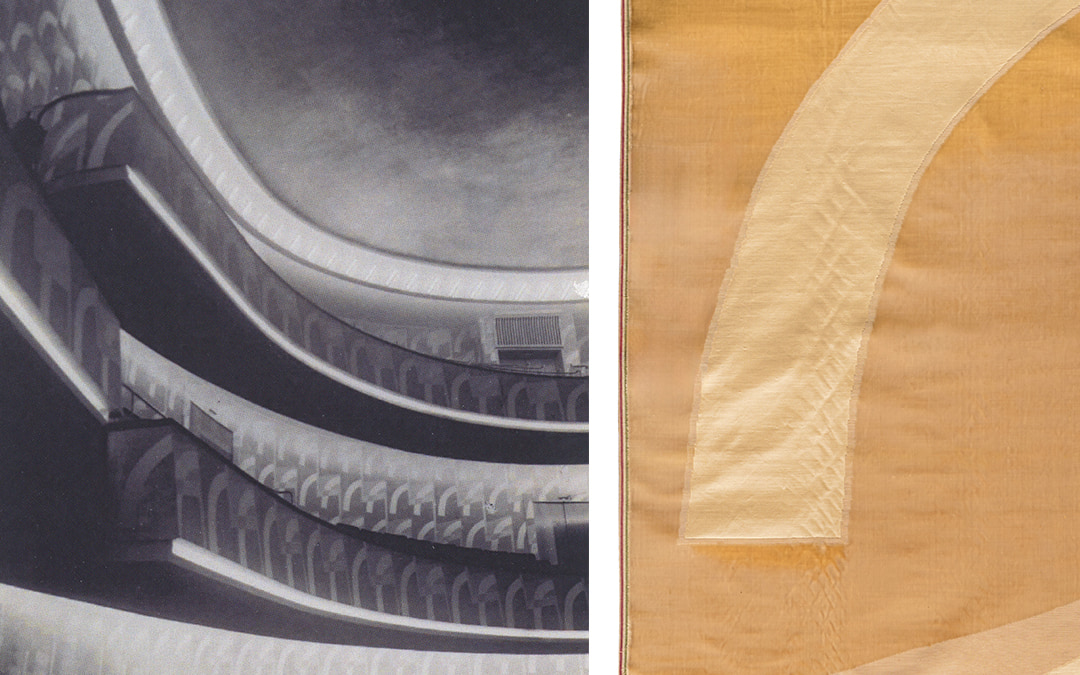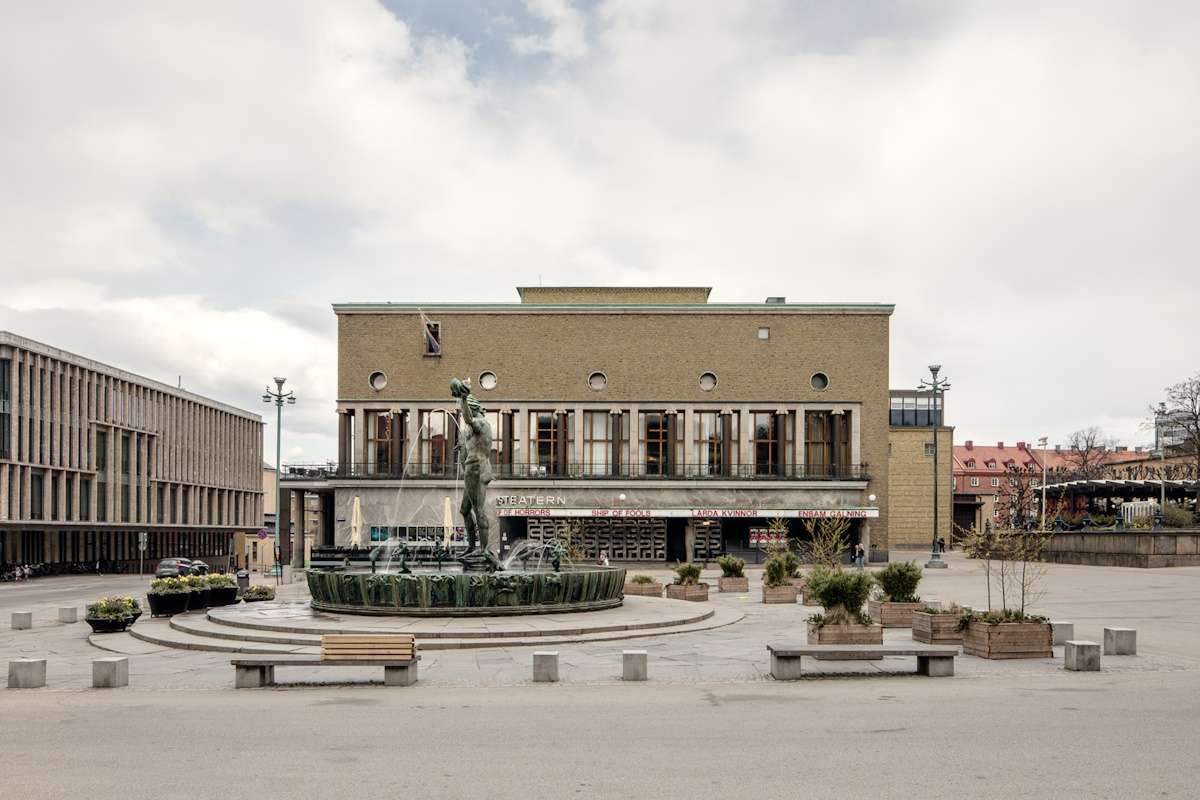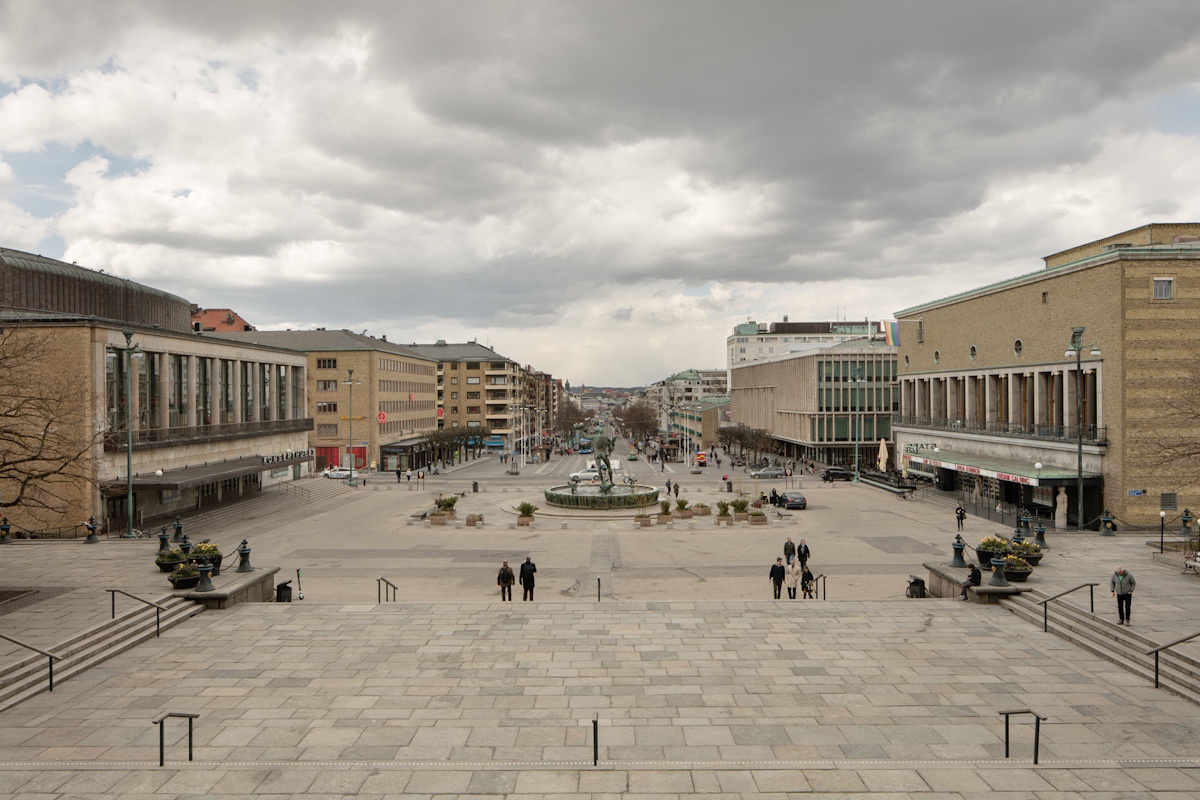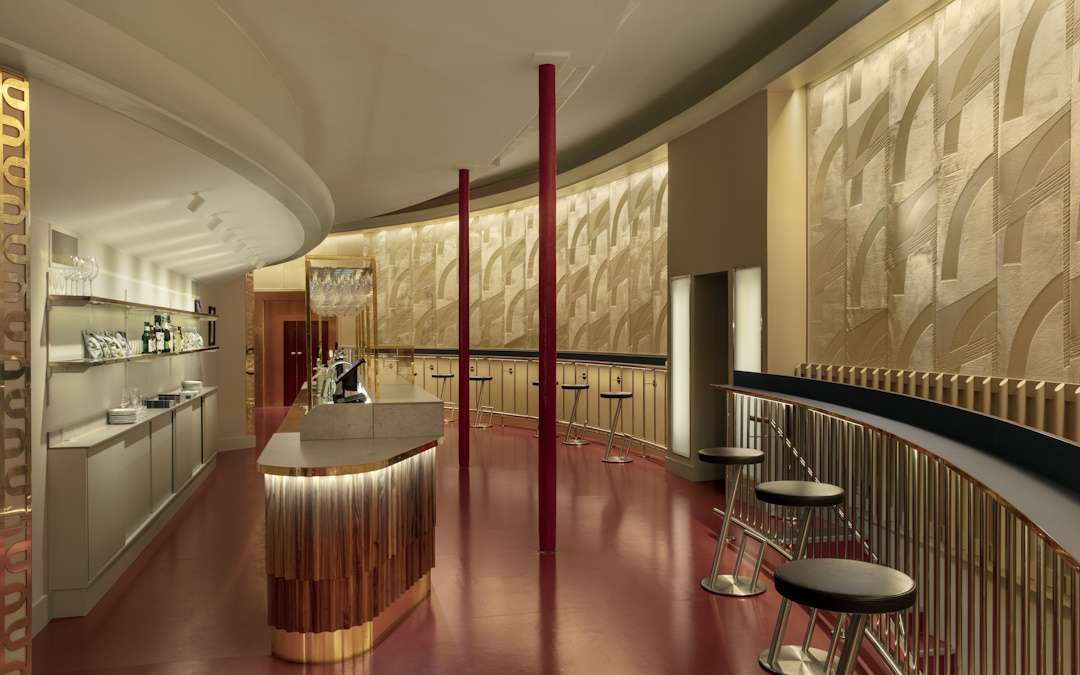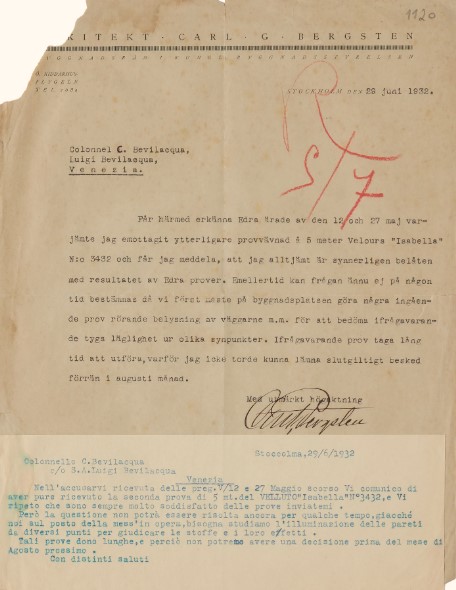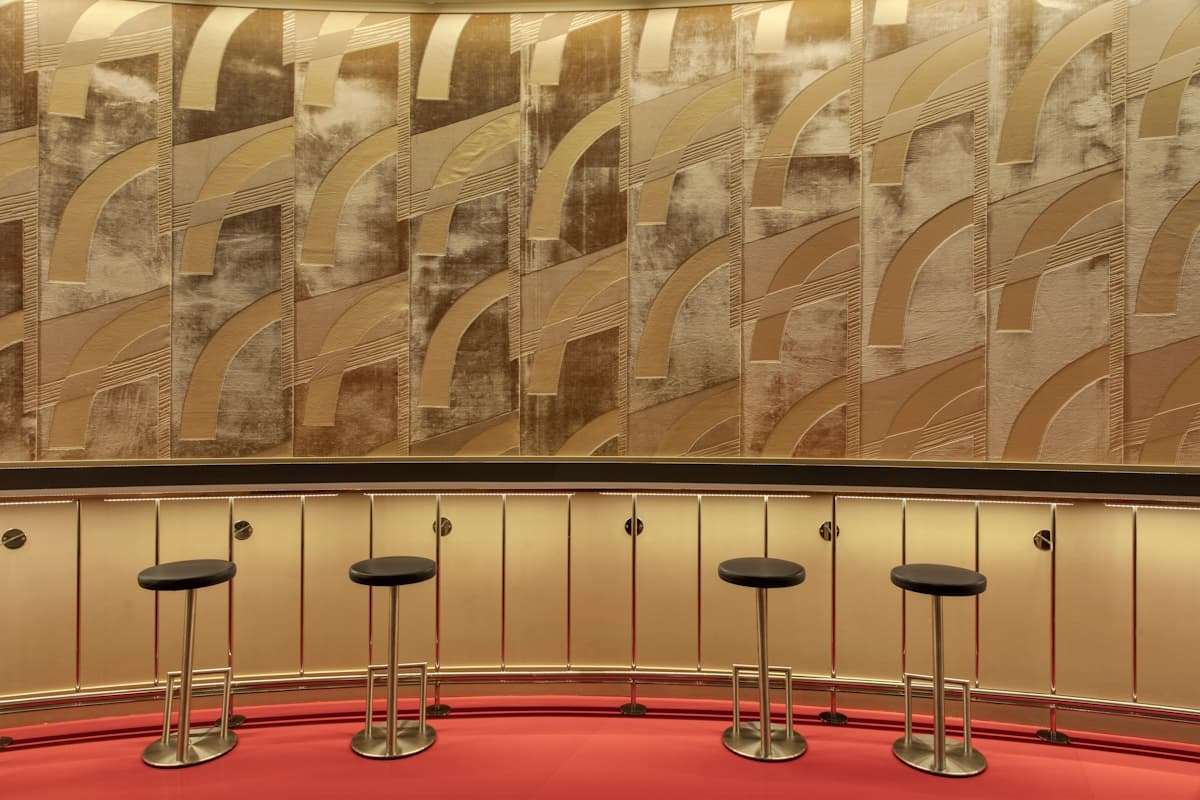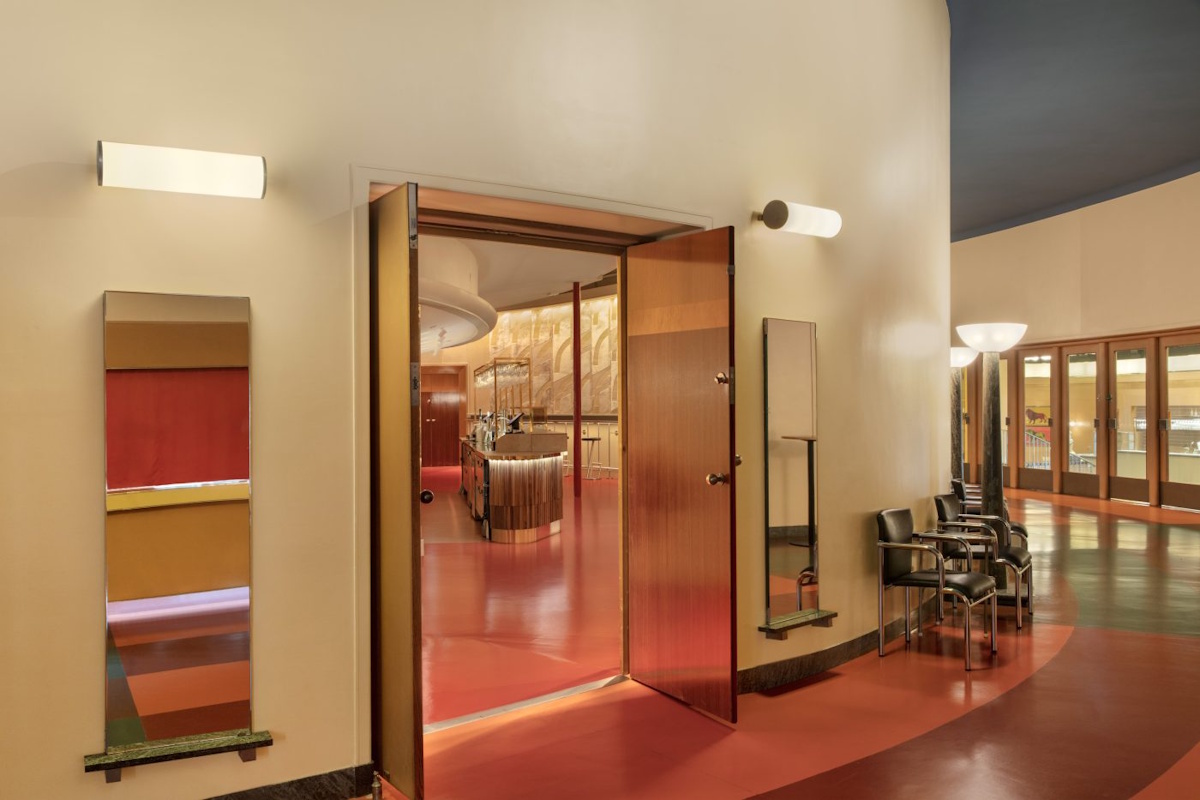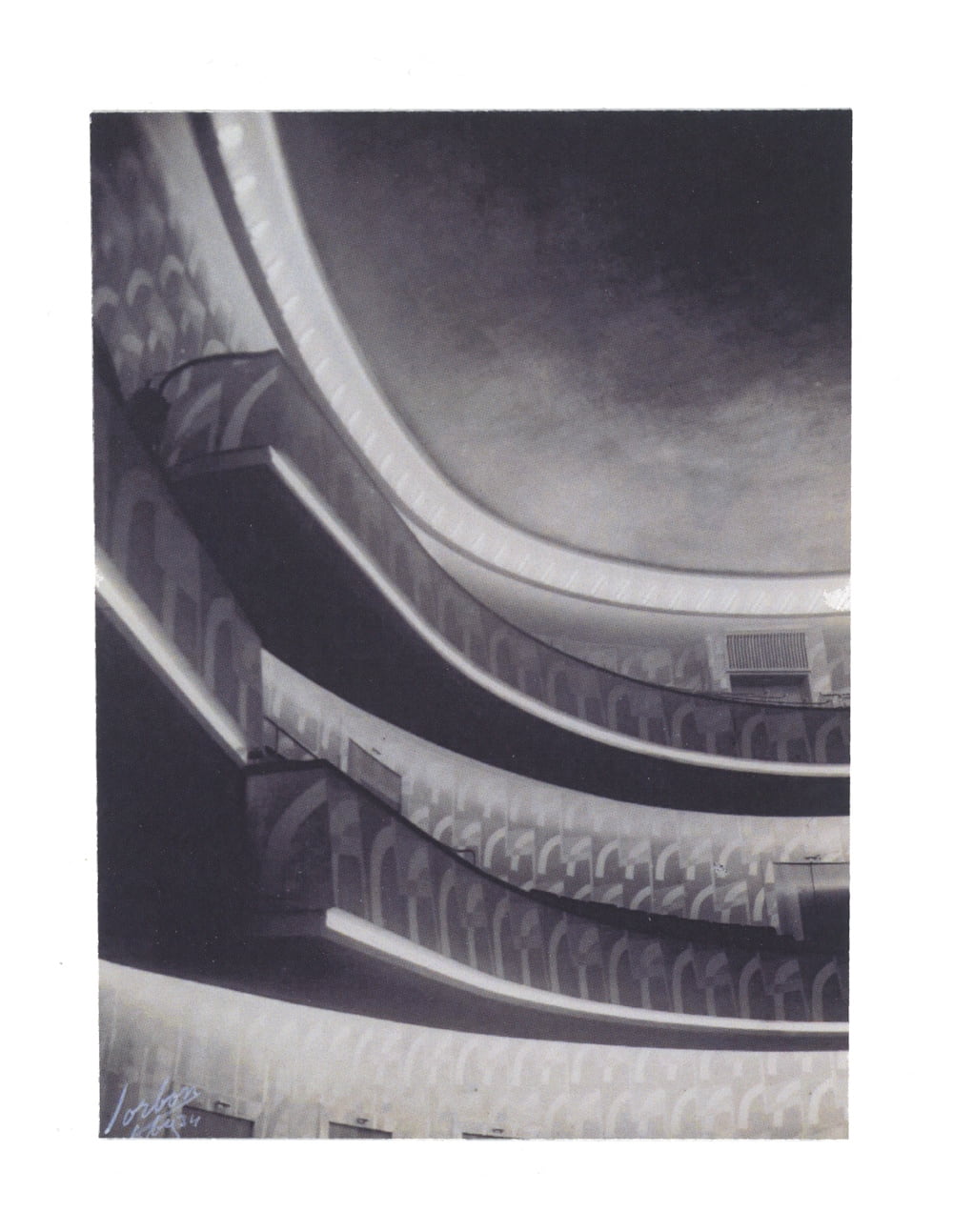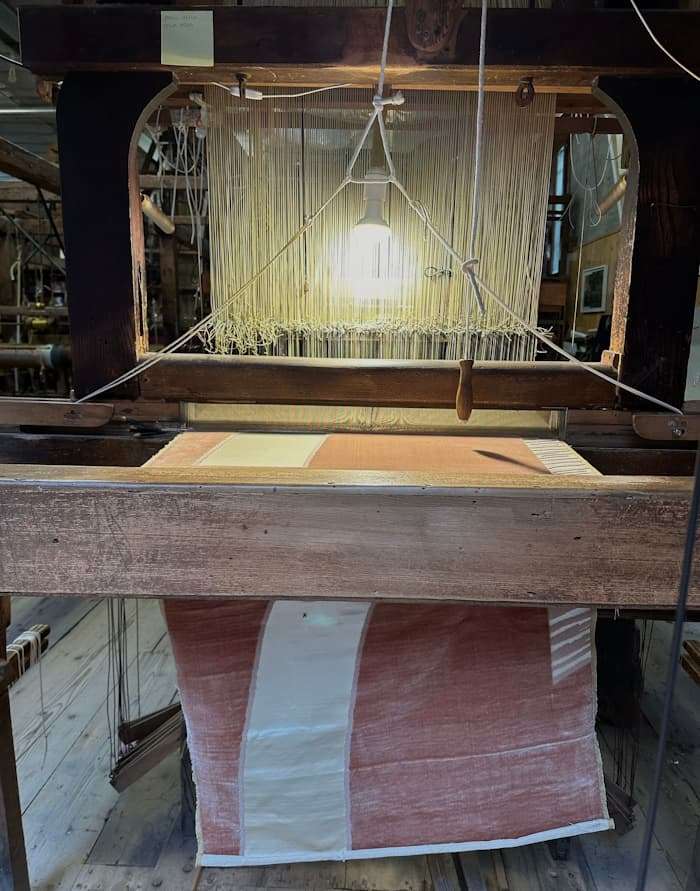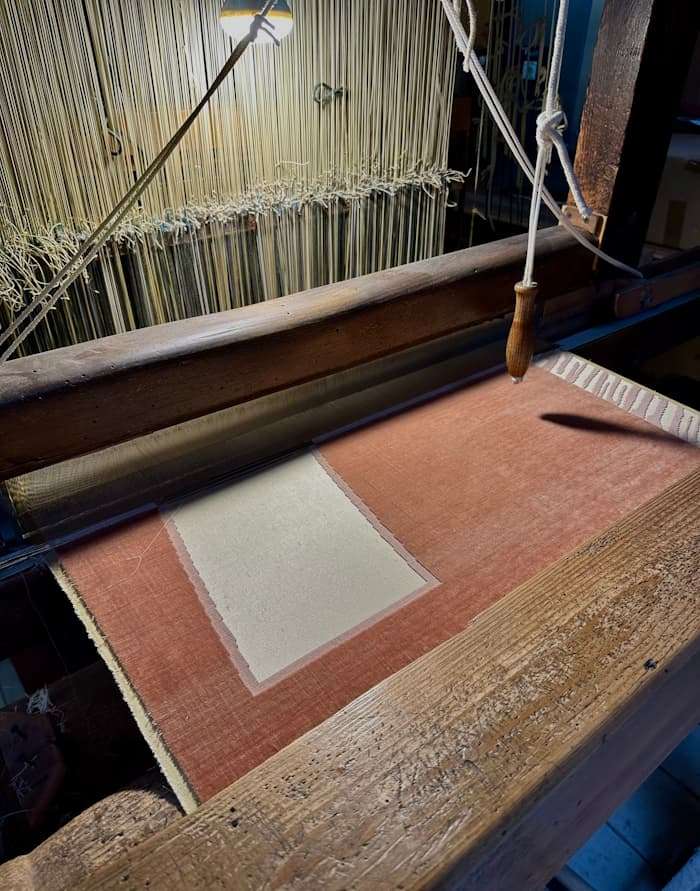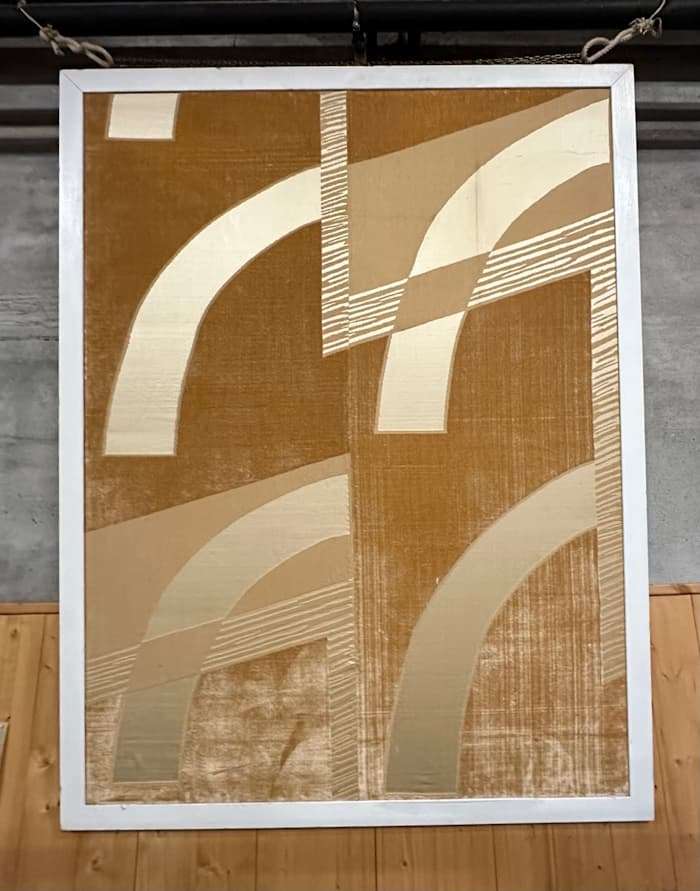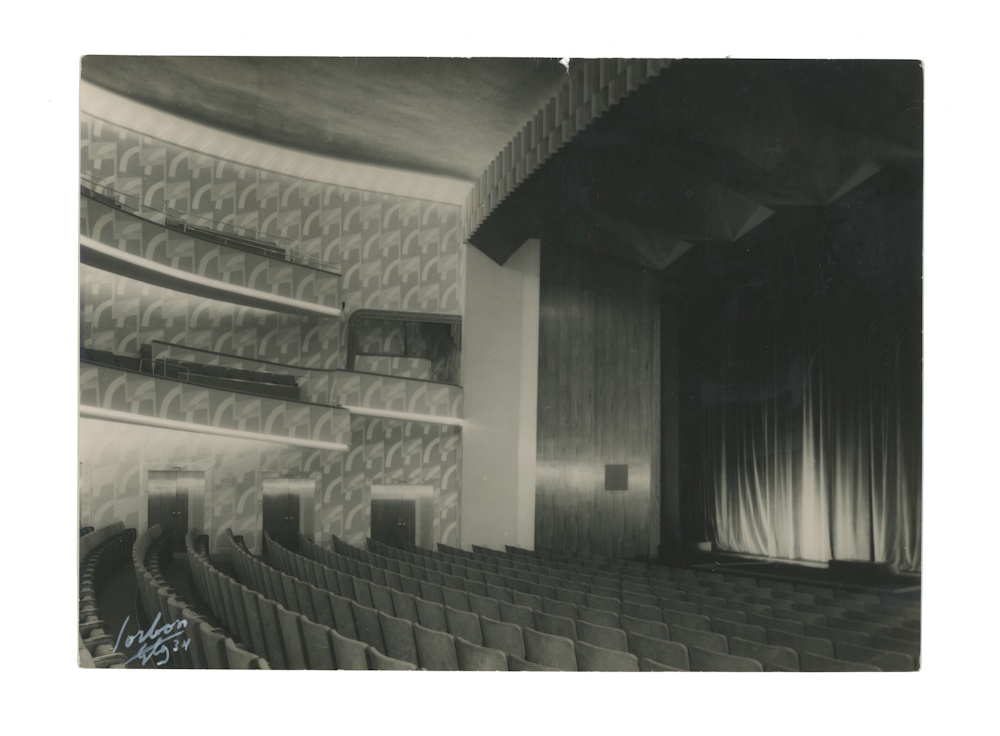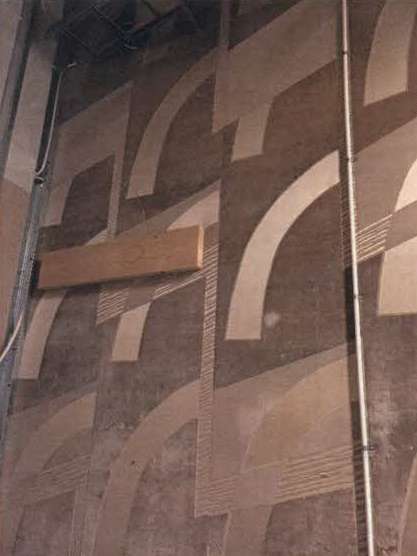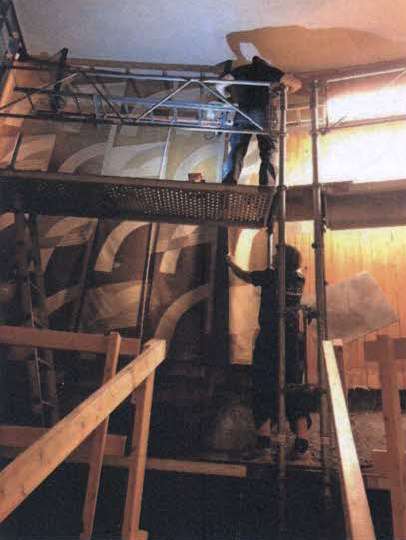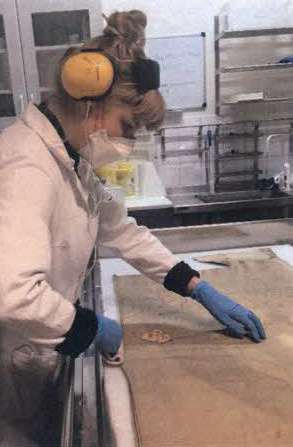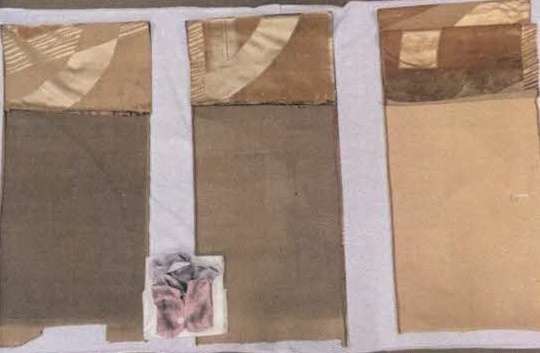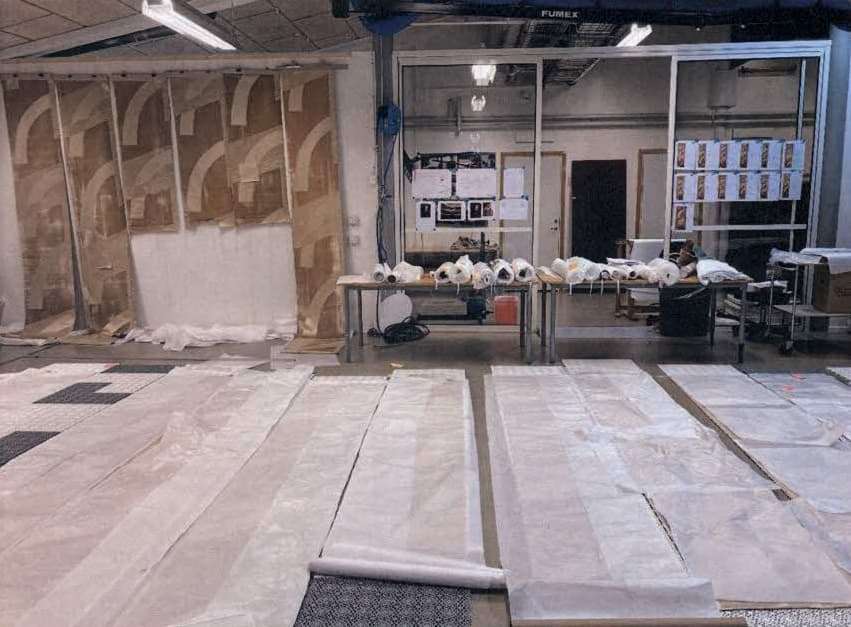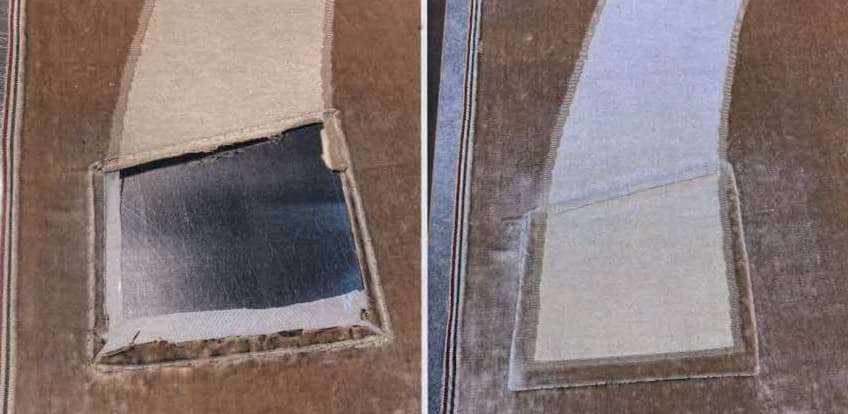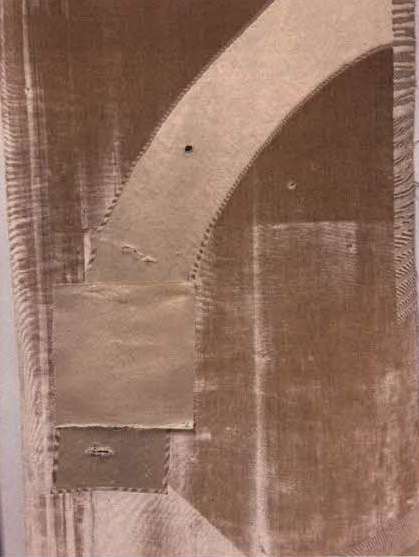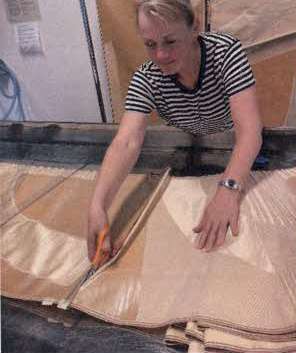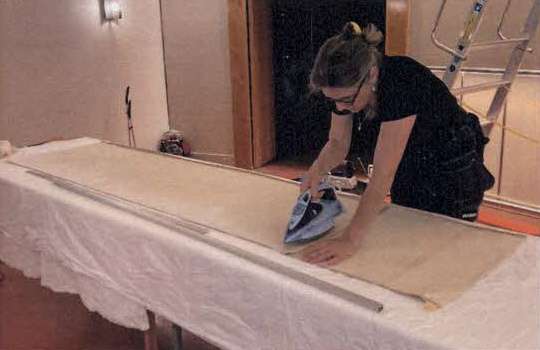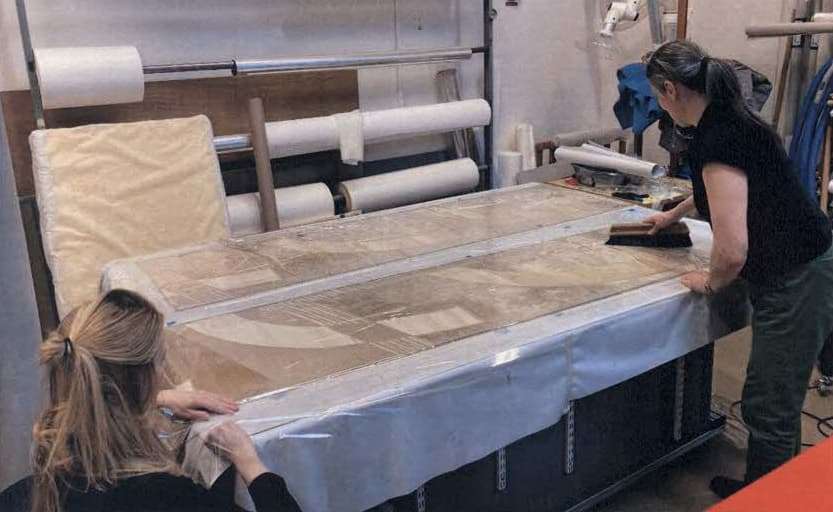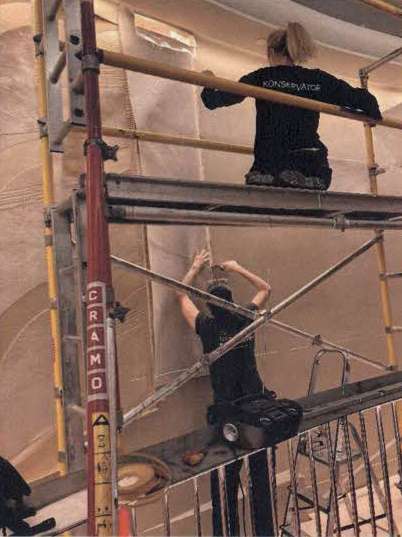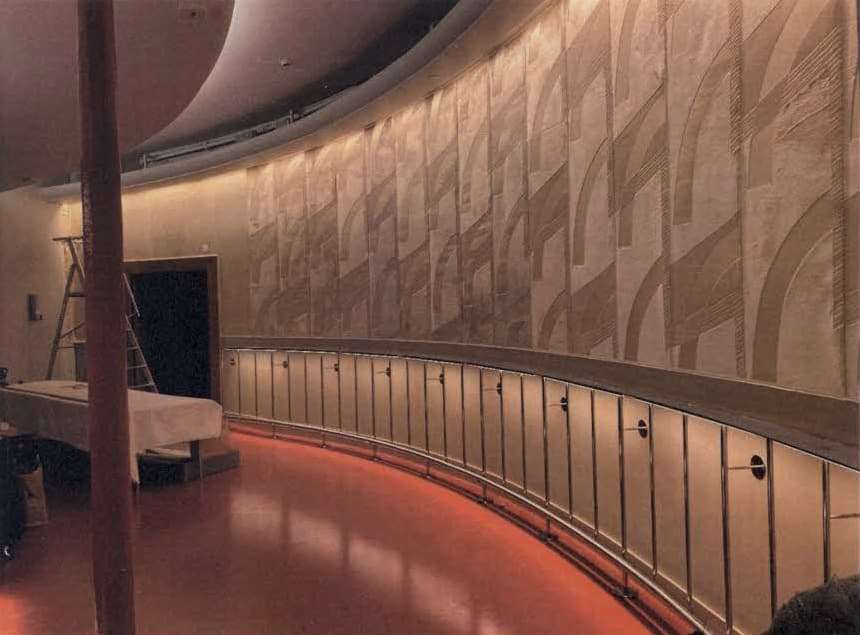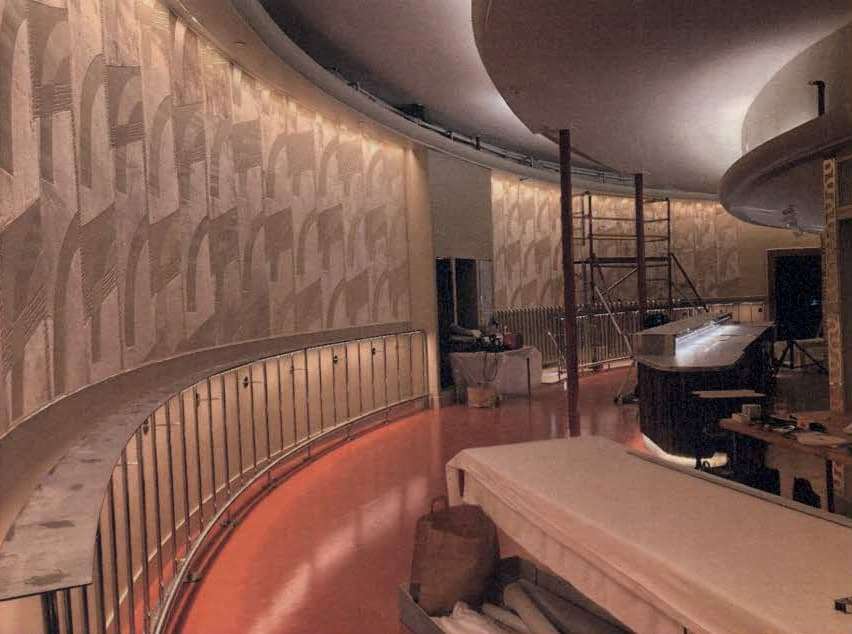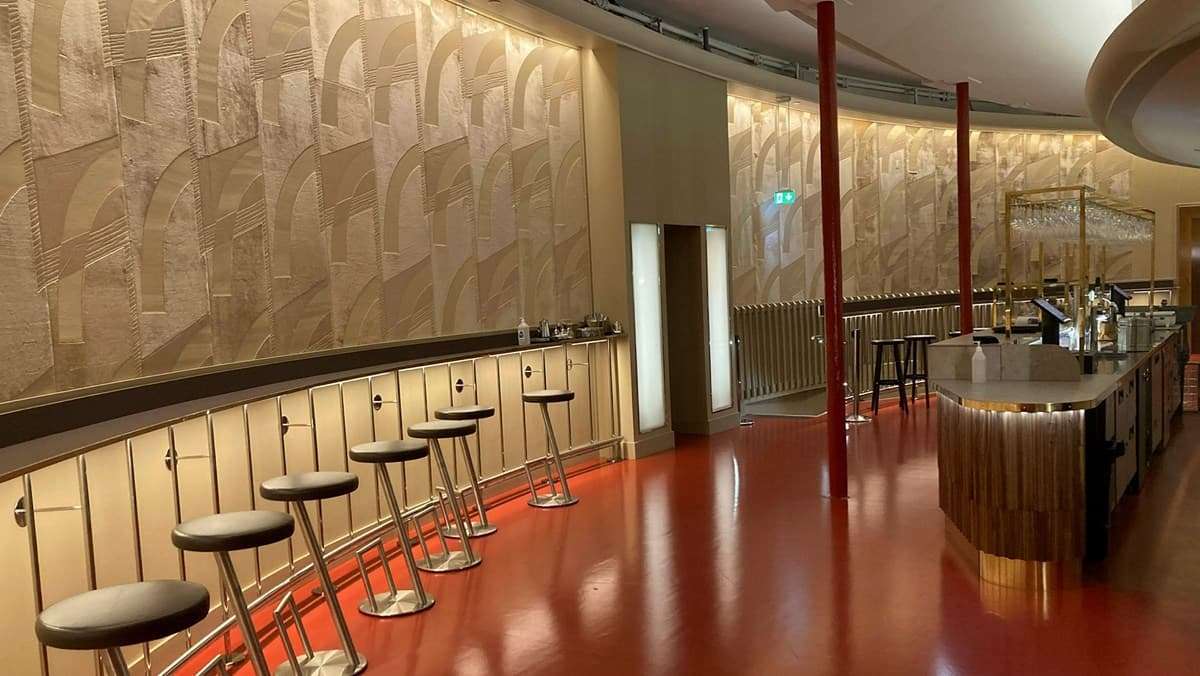Explore the delicate and fascinating process of restoring the precious “Deco” velvet in in Gothenburg’s Stadsteater (City Theater), Sweden. A work that restored a unique piece of history and textile art, created by our Tessitura in the 1930s, to its original splendor.
A Brief History of the Gothenburg Theater and Deco Velvet
The Gothenburg City Theater underwent an extraordinary restoration in 2021. Lasting a whole year, the work was commissioned by the municipal company Higab, designed by the interior design studio AIX, and executed by Studio Västsvensk Konservering.
One of the rare examples of Art Deco in Sweden, the theater is the city’s main venue for the performing arts and was declared a protected building in 2017. For this reason, the restoration sought to preserve the historical and cultural value of the theater, built in 1934 during the transition from classicism to emerging modernism, paying great attention to the details of the interior.
The Gothenburg City Theater
At the heart of this project is Thalia, the new foyer bar, a jewel added to the theater during the renovation and now one of the most culturally significant areas of the entire building.
Bar Thalia at the Gothenburg City Theater
Its back wall featured original Deco velvet panels in poor condition, which could not be completely restored. In fact, it dates back to the years between 1932 and 1934, when it was handmade in our Tessitura, based on a design by architect Carl Bergsten, who designed the theater. The architect, who lived in the era of functionalism, did not sacrifice beauty for utility, and it is thanks to his love of aesthetics that this design, which he called “Isabella,” is now part of our archive.
Letter from architect Carl Bergsten to Cesare Bevilacqua
In its project, Studio AIX also sought to combine functionality and beauty, starting with historical Art Deco-inspired elements and developing them with a sense of playfulness and warmth. The main wall of the Thalia, with its original curved shape, therefore retained the Deco velvet in the upper part. In the lower part, separated by a narrow wall-mounted shelf, the wall was fitted with a coffered panel, which strategically reduced the part to be covered with Deco velvet.
On the opposite side is a wooden bar counter with gold metal details. The shiny red floor contrasts nicely with the neutral tones of the wood of the counter and the champagne color of the Deco velvet, which is now the most characteristic feature of the room.
The Deco Soprarizzo Velvet
The Deco soprarizzo velvet is a textile masterpiece that originally covered the walls of the main auditorium. Since then, the hall has been redesigned, but the original velvet has been retained behind the new walls. Fortunately, the theater had kept two rolls of velvet from the time of its construction, which were used in the restoration to replace the excessively damaged parts.
The design of this velvet features sweeping curves, sharp contrasts, and simple, geometric shapes inspired by Art Deco. The background is beige and crossed entirely by a wide curved line which, at the top and on one side, is interrupted by a diagonal and a vertical band. The design is very simple and evokes the idea of movement so beloved by artists of the 1920s and 1930s.
From a textile point of view, its peculiarity lies in the fact that the contrast between the design and the background is created by light: reflecting on differently woven areas, it shows different colors, even though it is made with a single champagne-colored silk yarn. This is because the fabric has parts where the velvet is cut and parts where it is formed by curls: the former absorbs light and appears darker than the latter.
Deco soprarizzo is an extremely exclusive fabric and is still made today by hand on our 18th-century looms, using pure silk for both the pile and the background.
With the same design, we also produce the Göteborg heddle velvet today.
The Meticulous Restoration Work: From the Initial Stages to The Final Assembly
The restoration of the Deco velvet was a handcrafted process divided into several stages. First, during a preliminary visit, it was inspected in its original context, revealing surface dirt, stains, and damage of various kinds. The plasterboard had been fixed directly to the fabric, and it is very likely that smoking was allowed on the premises, so over time, the velvet became a filter for the dust released into the air.
The Gothenburg City Theater in the 1930s
A series of cleaning tests showed that cleaning with water could not be done, requiring the intervention of a specialized laundry in Gothenburg. Dry cleaning with hydrocarbons proved to be the most delicate and effective method, even to regenerate the organic component of the silk.
The subsequent disassembly required great care and attention to detach the velvet coverings from the walls and separate them. They had been sewn together, some by machine, some by hand, and others glued to panels. After being cataloged, they were transported to SVK headquarters for freezing at -30 degrees C, which was necessary to prevent any pest attacks.
The stages of the Deco Velvet restoration – Photo gallery
During this phase, the velvet was found to be in surprisingly good condition, although damage in the form of holes and wear had to be addressed. The fabrics were taken to the laundry for cleaning, which made them significantly cleaner and fresher on both the front and back. At the same time, however, the treatment wore them down, especially in the smooth satin sections (the curved bands). Nevertheless, given that the velvet was very dirty, it was decided to continue with the treatment and reinforce the material afterwards with a suitable support.
The actual restoration process involved the use of lamination to reinforce the fabric. This method, commonly used in painting and textile conservation, involved applying a fireproof lining to the back of the velvet with a heat-activating adhesive layer. The damaged parts were carefully repaired, using hand-dyed fabrics to replace some of the original sections.
Reassembly of the restored fabrics on the Thalia Bar wall was a meticulous process, with careful adaptation of the design to maintain visual harmony. The modules were fixed to the plaster with transparent adhesives, while wooden slats were screwed in to elegantly mask the upper edges of the velvet and frame the doors. The project was completed with the insertion of a coffered panel in the lower part of the wall, completing the composition and defining the relationship between the different surfaces with balance.
The stages of the Deco Velvet restoration – Photo gallery
Beauty Rediscovered and Heritage Preserved
The result of this impressive restoration work is a beautifully renewed Deco wallpaper velvet, which now adorns the wall of the Thalia Bar in the Gothenburg City Theater. The golden sheen of the silk has been restored, the damage repaired, and the fabric, although fragile, now exudes its original elegance.
Looking beyond aesthetics, this restoration represents an act of preservation of the Gothenburg Theater’s cultural and historical heritage, which has helped to create an authentic environment true to the place’s origins.
Deco velvet, a splendid fabric that has withstood the passage of decades, is now the star of a new chapter in the Theater’s history, being revived in the Thalia Bar in all its majesty.
Photos by Kalle Sanner and Studio Västsvensk Konservering

